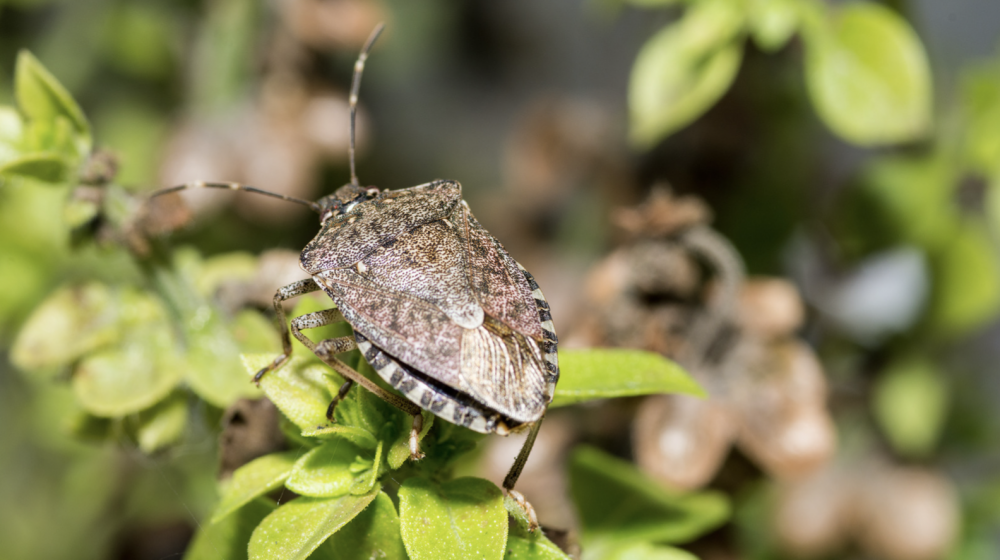Five Common Garden Insect Pests

Stinkbug
If you have a home garden, you know the headache of dealing with garden pests. Insects can damage the produce, both directly and indirectly. There are a multitude of different insects that can wreak havoc on your vegetables. We asked MSU Extension Entomology Specialist Blake Layton what are the five most common insects he sees in gardens. Here’s his list:
- Stink bugs - Stink bugs cause damage to many vegetables, including tomatoes, peas, okra, corn, and more by feeding on the fruit. There are several different species of stink bugs found in Mississippi gardens. Stink bugs are easily identified by their brown or green shield-shaped bodies. And you may never forget the odor they release when they feel threatened! Stink bugs are a peak problem in late summer and fall. As you look through your garden for pests, try to remove egg masses, nymphs, and adult stink bugs to help slow the spread.
- Squash bugs – Squash bugs damage exactly what you think they would: squash. They also damage other crops, including cucumbers, pumpkins, squash, and watermelons. They bear a resemblance to the stink bug, but they are longer in length and more oval-shaped. They feed on the leaves of plants by sucking on their juices and can even cause small plants to die overnight! Using row covers on your young plants can help protect them against adult squash bugs. You will also want to remove any egg masses, nymphs, and adults on small plants and seedlings. Adult squash bugs are often drawn to abandoned plants. To minimize the bug population, make a habit of removing any abandoned or unharvested produce in your garden.
- Leaf-footed bugs – Another insect similar to stink bugs is the leaf-footed bug. These pests tend to damage tomatoes, peppers, and eggplants. They are easily distinguished by a white stripe across their back and leaf-shaped hind legs. Leaf-footed bugs are a big problem during the last half of the growing season. They are hard to control because they fly away when disturbed only to return later. One handy tip to combat leaf-footed bugs is to plant sunflowers in the area to serve as a trap to kill the bugs with contact sprays. Leaf-footed bugs tend to gather on sunflowers, so spraying them early in the morning when they are less likely to fly away is the best method to kill them.
- Squash vine borers – Squash vine borers are reddish-orange moths with black wings that attack squash, pumpkins, and other cucurbits. These insects cause squash and pumpkins to suddenly wilt and die. The eggs they lay on the plants turn into caterpillars that feed on the plant and eventually kill them. To prevent further infestation, destroy any plants that have died.
- Fruitworms - Fruitworms often attack a variety of vegetables but are especially damaging to tomatoes and corn. Night-flying moths lay eggs on the plants. As the caterpillars hatch, they bore into the produce. A heavy fruitworm infestation can do severe damage to tomatoes, potentially destroying over half of the crop!
Insects typically grow in number throughout the growing season. Consider planting produce early to avoid the large number of insects during the late summer and fall. If problems arise, there are a variety of insecticides that can be used to treat these bugs. Pyrethrins, bifenthrin, carbaryl, malathion, permethrin, cyhalothrin, zetamethrin can all be used to treat stink, squash, and leaf-footed bugs. Permethrin, bifenthrin, and zetamethrin can be used to treat squash vine borers and fruitworms. Be sure to carefully read all labels on these insecticides.
To get a complete list of insect pests that cause problems in vegetable gardens, Extension Publication 2347, “Insect Pests of the Home Vegetable Garden,” is a great resource. It will go into detail on the many insects you’ll run into during growing season.
Your local Extension agent is available to answer any questions that may arise as you deal with pesky pests in the garden. Reach out to your county office for more information.
Subscribe to Extension for Real Life
Fill in the information below to receive a weekly update of our blog posts.









